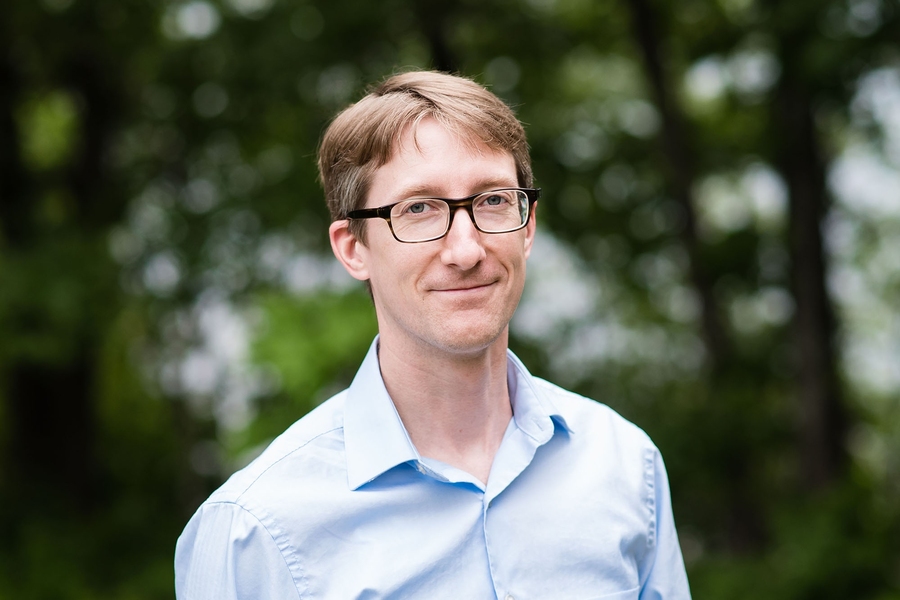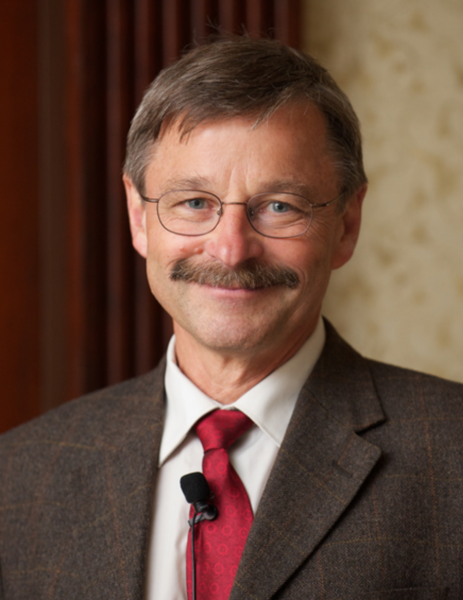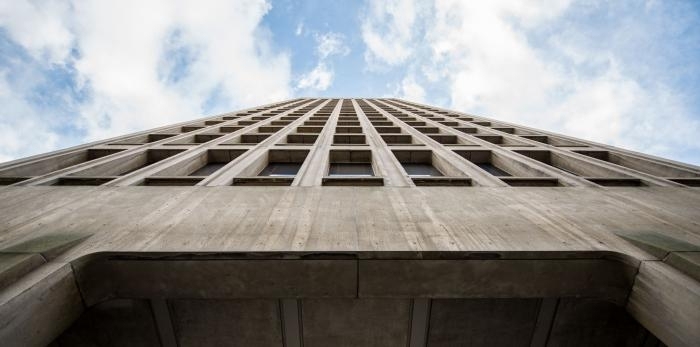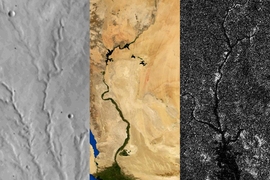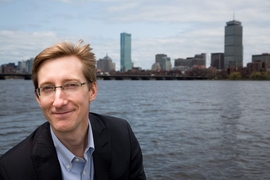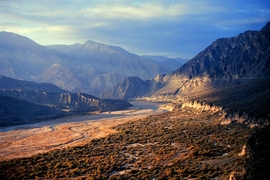Taylor Perron, associate professor of geology and chair of the Program in Geology, Geochemistry and Geobiology, has been appointed associate department head for MIT’s Department of Earth, Atmospheric and Planetary Sciences (EAPS), effective July 1. He succeeds Tim Grove, the Robert R. Shrock Professor of Earth and Planetary Sciences and the chair of the Joint Committee for Marine Geology and Geophysics.
Working with the EAPS academic program administrator and department head, Perron will oversee the department’s educational program. This encompasses ensuring the development and quality of the curriculum and the fieldwork program, teaching, the general exam process, admissions and tasks related to the EAPS educational mission. Building upon Grove’s accomplishments, Perron will focus on expanding the department’s engagement with and exposure to MIT undergraduate students, utilizing modern technology for education and outreach, and bettering the overall learning experience of students across the department.
“We are living in an era of exploration and discovery — from Earth's history and the tree of life to the outer reaches of the solar system and beyond — and our society depends in so many ways on the fields we study in EAPS, from climate and natural disasters to energy and policy,” Perron said. “I want to help as many MIT undergraduates as possible to experience that excitement, consider that relevance, and understand the associated career options. I also want to continue our efforts to enhance our world-leading graduate program.”
Fine-grained analysis
Perron’s research touches upon the complementary and intersecting themes studied in EAPS: earth, planets, climate, and life. He examines how landscapes form and evolve on Earth and other planets. Using theory, modeling, observations and experiments, Perron and his group are charting new paths in river research. Currently, he’s working with researchers in the MIT Department of Mechanical Engineering to explore on the microscale how turbulent flows move sand and gravel. Dipping into the field of evolutionary biology, Perron’s group is uncovering how changes in river paths that occurred over millions of years might be responsible for the exceptional diversity of fish in regions like the southeastern U.S. He’s also delving into archaeology with colleagues in MIT’s Department of Materials Science and Engineering to learn how rivers and plate tectonics shaped prehistoric human agriculture. Lastly, his group is continuing to study how rivers of methane sculpted the icy surface of Saturn's moon Titan.
In addition to his research and service in EAPS, Perron has taken initiative to improve the welfare of the MIT community and familiarize himself with Institute-wide views on student life and education. He advises first-year students, including working with MIT’s Experimental Study Group (ESG), and has chaired the Program in Geology, Geochemistry and Geobiology in EAPS. Perron has also as served on the MIT Faculty Committee on Student Life and the MIT Faculty Subcommittee on the Communication Requirement.
Passing the baton
Perron assumes the reins from Tim Grove, who has made major contributions to elevate and strengthen the quality of the EAPS education program. "Tim brought remarkable experience to the position, including education service at the Institute level, national leadership as president of the American Geophysical Union and as a member of the National Academy of Sciences, and of course through his own extensive teaching contributions in the classroom and in the field,” said Perron, who has learned a great deal from his predecessor. As member and chair of MIT’s Committee on the Undergraduate Program, Grove stayed connected to the educational mission of the Institute.
One particularly notable achievement was building an MIT-wide consensus that every MIT first-year student should have a faculty advisor. Within EAPS, he led a major effort to collect data and feedback from past graduates and reorganized the undergraduate curriculum, overseeing the streamlining of requirements for EAPS majors and minors. Additionally, Grove created a more uniform general exam structure and spearheaded several initiatives to enhance academic opportunities for graduate and undergraduate students. He also devoted a great deal of time to the ongoing improvement of the departmental facilities, a crucial effort he will continue even after the transition.
“Tim [Grove] was well liked by all students and will be a tough act to follow,” said EAPS department head and Schlumberger Professor of Earth and Planetary Sciences Rob van der Hilst, conveying his appreciation for Grove’s efforts and looking forward to building upon them in the future. “I am deeply grateful for Tim’s dedication, contributions, and accomplishments, and I very much look forward to working with Taylor to maintain a world-class educational program that not only continues to attract the best students but also shares what EAPS has to offer with the world beyond our own classrooms.”
